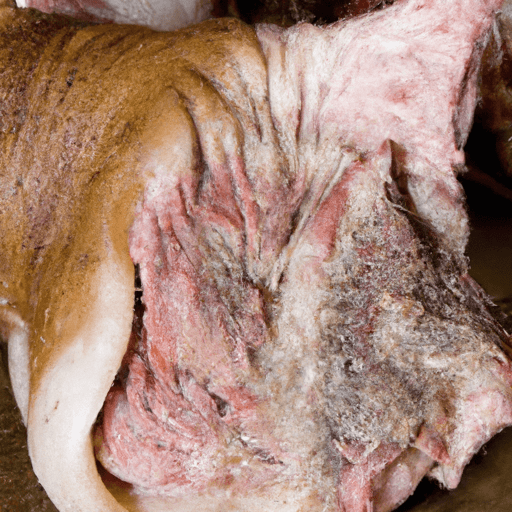The Bold Flavors of Boar Shank: A Culinary Delight
If you’re an adventurous food lover on the lookout for new and exciting taste experiences, then boar shank is a culinary delight that deserves a place in your kitchen. This lesser-known cut of meat offers a unique combination of robust flavors and tender texture that instantly elevates any dish it graces. In this blog post, we’ll explore everything you need to know about boar shank, from its taste and uses in cooking to its nutritional value and captivating history.
The Taste of Boar Shank: A Symphony of Flavors
Boar shank boasts a rich and complex flavor profile that stands out among other cuts of meat. The meat itself is succulent and juicy, with a melt-in-your-mouth tenderness when cooked low and slow. The taste can be described as intensely savory, with deep and earthy undertones that offer a subtle hint of sweetness. This unique intense flavor is owed to the diet of wild boars, which largely consists of nuts, berries, and roots found in their natural habitat.
Uses in Cooking: From Tender Braises to Flavorful Stews
Boar shank is a versatile cut that lends itself perfectly to a variety of cooking methods. Its high collagen content makes it a prime candidate for slow cooking techniques, allowing the meat to become incredibly tender while developing rich, concentrated flavors. Braising the shank in a flavorful broth or red wine reduction yields a delectable dish that satisfies both the comfort food seeker and the food connoisseur.
The succulent meat from the boar shank can also be used to create hearty stews and ragùs, infusing the dish with its bold flavors. It effortlessly absorbs the aromas of spices and herbs, highlighting each ingredient to create a harmonious blend of tastes. From traditional Italian dishes like osso buco to rich boar chili, the possibilities in the kitchen are endless when it comes to boar shank.
Nutritional Value: A Lean and Protein-Rich Option
Beyond its exceptional taste, boar shank also presents several nutritional benefits. It is a lean cut of meat, meaning it contains less fat than other traditional cuts, making it a healthier choice. Boar shank is also packed with high-quality protein, essential for muscle growth and repair. Additionally, it contains vital nutrients such as iron, zinc, and B-vitamins that contribute to overall well-being.
Historical Significance and Exciting Facts
Boar shank carries a significant historical significance, as wild boars have been hunted for their meat for thousands of years. For centuries, boar hunting has been a revered sport and part of cultural traditions in various regions worldwide. The wild nature of boars presents an exciting challenge for hunters, ensuring that only skilled individuals could capture the elusive game.
Interestingly, the meat from the boar has iconic status in some countries and is considered a delicacy. In many cultures, boar is associated with celebration and festive occasions, symbolizing abundance and good fortune. From ancient feasts to modern-day culinary adventures, boar shank continues to impress palates and captivate imaginations.
Time to Embrace Boar Shank!
Now that you’ve discovered the bold flavors, culinary uses, nutritional value, and intriguing history of boar shank, it’s time to embark on your own culinary adventure. Whether you’re seeking a special occasion centerpiece or simply want to treat yourself to a remarkable meal, boar shank is the perfect choice. Its intense flavor profile, tenderness, and versatility make it a cut above the rest. So, gather your ingredients, sharpen your knives, and let the bold flavors of boar shank transport you to a realm of irresistible culinary delight. Enjoy!
Boar Shank
Origin: Boar shank comes from the shank portion of a boar, which is the lower part of the leg. Boars are wild pigs native to Europe, Asia, and North Africa.
Common Uses: Boar shank is often used in slow-cooked dishes, such as stews, braises, and casseroles. It is known for its rich flavor and tender meat. Due to its connective tissues and collagen content, the shank benefits from long, slow cooking to break down the tough fibers and become tender.
Nutritional Benefits: Boar shank is a good source of protein, vitamins, and minerals. It contains essential amino acids necessary for the body’s growth and maintenance. It is also rich in iron, zinc, selenium, and B vitamins.
Unique Properties: Boar shank has a distinct and intense flavor compared to pork. The meat is darker and leaner, owing to the boar’s wild nature and active lifestyle. The connective tissues and collagen in the shank contribute to a rich and gelatinous texture when slow-cooked, adding depth to sauces and broths.
Historical Significance: Boar has been hunted and consumed for centuries throughout Europe and Asia. In medieval times, wild boar hunting was a vital part of noble and royal feasts. Boar shank, with its long slow-cooking requirements, was often reserved for special occasions, where the resulting flavors and tenderness were highly prized.
Note: It’s essential to ensure the proper cooking and handling of wild game meats like boar, as they may carry different health considerations compared to conventionally-raised meats.




Use the share button below if you liked it.
It makes me smile, when I see it.